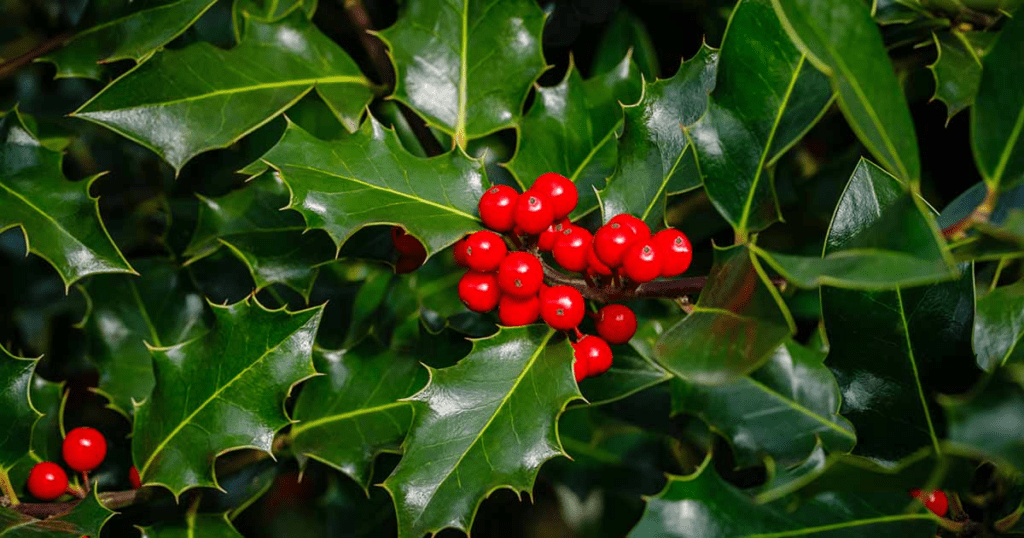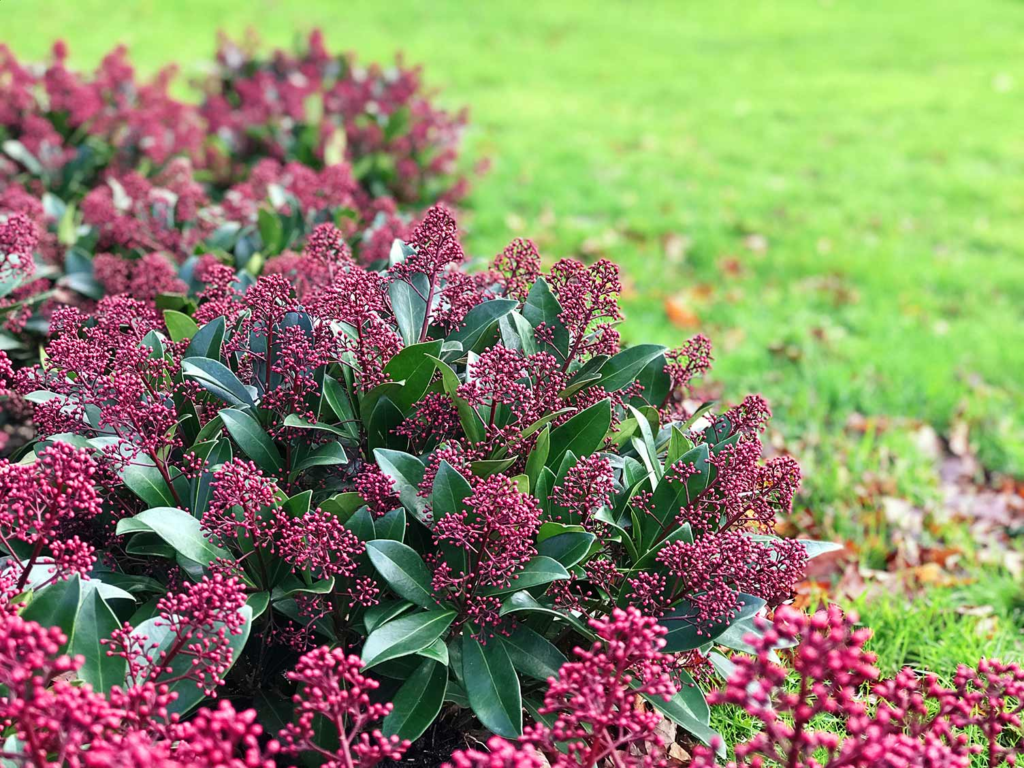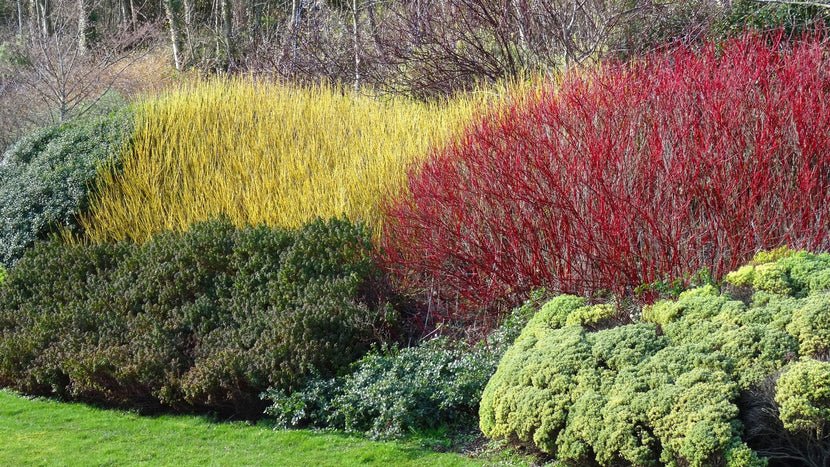As winter gently blankets the British landscape, transforming it into a serene and frost-kissed canvas, garden enthusiasts face the challenge of maintaining a lively and vibrant outdoor space. However, with the right selection of evergreen plants and comprehensive care, your garden can not only survive but thrive, showcasing vibrant shades of green against the winter backdrop. In this extensive guide, we will delve deeper into the top 10 evergreen plants for a lush British winter garden. Along with some top tips for caring for these winter wonders.
Boxwood (Buxus sempervirens)

Boxwood, with its timeless appeal, is not only visually pleasing but also versatile in its uses. To ensure your boxwood remains healthy through the winter, consider planting it in well-draining soil. Boxwood prefers slightly acidic to neutral soil pH. Mulch around the base with organic matter to regulate soil temperature and moisture. Regular pruning is essential, preferably in late winter or early spring, to maintain its compact shape and encourage new growth.
Additionally, boxwood is susceptible to certain pests like boxwood blight and boxwood leafminer. Keep an eye out for signs of infestation and treat promptly with horticultural oils or insecticidal soap.
Holly (Ilex aquifolium)

Holly’s glossy leaves and festive berries make it a winter staple, but to ensure its health during the colder months, it’s essential to consider several factors. Plant holly in well-drained soil with a slightly acidic pH for optimal growth. Regular pruning helps shape the shrub and maintain its density. Pruning is best done in late winter or early spring.
Holly varieties with berries add an extra layer of interest. To promote healthy berry production, it’s crucial to have both male and female plants in proximity for pollination. Keep in mind that some hollies are dioecious, meaning they have separate male and female plants, while others are monoecious, featuring both male and female flowers on the same plant.
Winter Heather (Erica carnea)

Winter Heather is not only a visually striking ground cover but also a resilient addition to your garden. To ensure its success in the British winter, plant it in well-draining, acidic soil. Mulching with acidic organic matter helps maintain the soil’s pH and provides additional insulation. Trim faded flowers periodically to encourage continuous blooming.
Winter Heather is generally low-maintenance, but it benefits from a light pruning in late spring to control its growth and rejuvenate the plant. This type of pruning involves cutting back the stems by about one-third to one-half to maintain a compact form.
Winter Jasmine (Jasminum nudiflorum)

Winter Jasmine’s golden blooms brighten the gloomiest winter days. This deciduous shrub is easy to care for, but periodic attention ensures optimal performance. Plant it in a sunny spot with well-drained soil for the best results. Provide support for the sprawling stems, especially if you want to encourage a climbing habit.
While winter jasmine is generally low-maintenance, pruning is recommended after flowering to maintain a neat appearance and encourage new growth. Remove any dead or tangled branches to stimulate the plant’s vitality.
Skimmia (Skimmia japonica)

Skimmia’s adaptability to shaded areas makes it an excellent choice for those less sunny corners of your garden. To ensure its success in the British winter, plant it in well-drained, slightly acidic soil. Water consistently, especially during dry spells, to maintain vibrant foliage. Light pruning in spring helps maintain its shape and remove any damaged or dead branches.
Skimmia is dioecious, so for berry production, it’s advisable to plant both male and female specimens. The female plants produce the vibrant red berries that add to Skimmia’s winter charm.
Mahonia (Mahonia aquifolium)

To ensure your Mahonia thrives in the British winter, plant it in well-draining soil with a slightly acidic to neutral pH. Regular pruning helps maintain its shape and promotes air circulation within the plant. Watering during dry periods is crucial, as Mahonia prefers consistently moist soil.
Mahonia is generally pest-resistant, but keep an eye out for signs of aphids or scale insects. These can be treated with insecticidal soap or neem oil. Mulching around the base of the plant aids in moisture retention and protects the roots from extreme temperatures.
Euonymus (Euonymus fortunei)

‘Emerald ‘n’ Gold’ Euonymus adds a burst of colour to winter gardens. Plant it in well-drained soil and provide a layer of mulch to regulate soil moisture and temperature. Regular pruning, especially in early spring, helps control its growth and enhances its vibrant coloration.
Euonymus can be susceptible to scale insects. Keep an eye out for any signs of infestation and treat promptly with insecticidal soap or horticultural oil. While generally low-maintenance, periodic attention ensures a healthy and vibrant shrub.
Sarcococca (Sarcococca confusa)

Sweet Box, with its fragrant flowers, requires minimal care for maximum impact. Plant it in well-drained soil with a slightly acidic pH, and water consistently. Regular pruning post-flowering helps maintain its shape and encourages new growth. A layer of mulch around the base protects the roots from extreme temperatures and retains moisture.
Sarcococca is generally resistant to pests and diseases. However, occasional checks for signs of scale insects or aphids are advisable. Treat any infestation promptly with insecticidal soap or neem oil.
Cotoneaster (Cotoneaster horizontalis)

Cotoneaster, known for its spreading habit, thrives in well-draining soil. Prune it lightly in late winter or early spring to control its shape and remove any dead or damaged branches. Regular watering, especially during dry spells, ensures vibrant foliage and abundant berries.
Cotoneaster is generally hardy but keep an eye out for signs of fire blight or scale insects. Prune affected branches promptly and treat with appropriate fungicides or insecticides. Mulching around the base provides additional protection to the roots.
Camellia (Camellia japonica)

Camellia, with its elegant blooms, requires specific care to flourish in the British winter. Plant it in acidic soil with good drainage and apply a layer of mulch to retain moisture. Regular watering is essential, especially during dry periods. Prune after flowering to shape the shrub and remove any dead or crowded branches. Camellias benefit from protection against harsh winds, so consider planting them in a sheltered spot.
Camellias are susceptible to certain pests like aphids and scale insects. Regular inspections and prompt treatment with insecticidal soap or neem oil can prevent infestations. Additionally, providing adequate air circulation helps reduce the risk of fungal diseases.
Conclusion:
Creating a lush and vibrant winter garden in Britain is not only possible but also incredibly rewarding with the right selection of evergreen plants and comprehensive care. From the timeless charm of boxwood to the fragrant blossoms of Sarcococca, these winter wonders bring life and colour to your outdoor space even in the coldest months. By following these detailed tips for each plant’s care, you can ensure a thriving garden that defies the winter chill, providing a picturesque backdrop for your home throughout the season. With a bit of attention and care, your garden can become a winter sanctuary filled with evergreen beauty, showcasing the resilience and vitality of nature against the winter backdrop. These top 10 evergreen plants for a lush British winter garden will be sure to bring turn your garden into a winter wonderland of greenery.

Leave a Reply